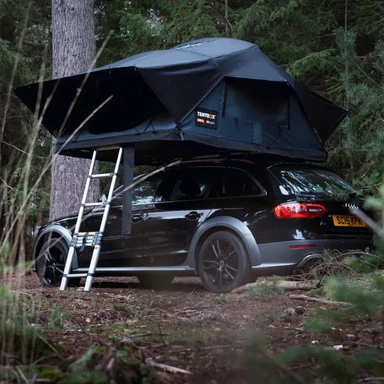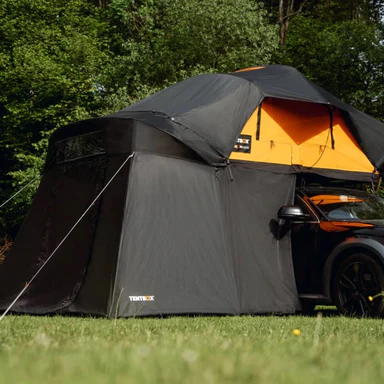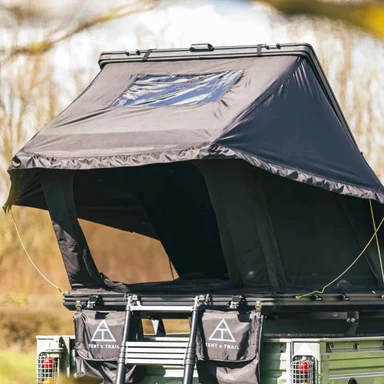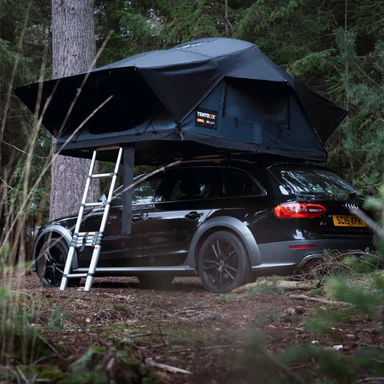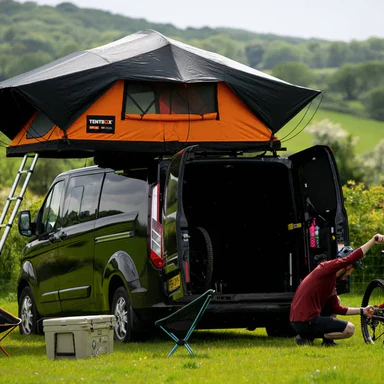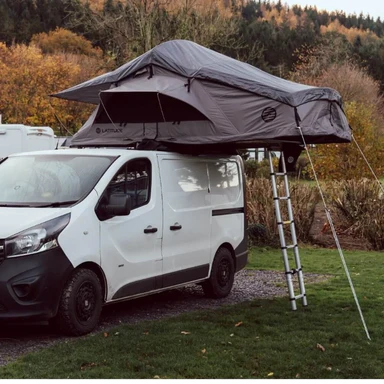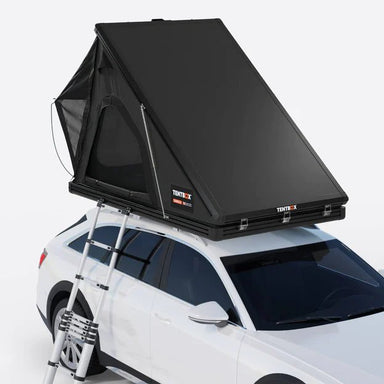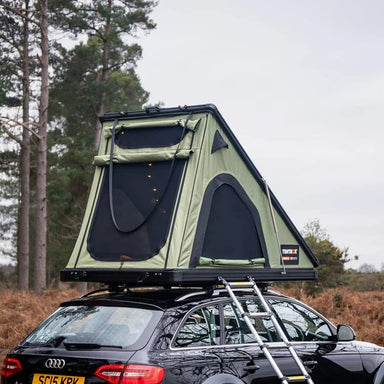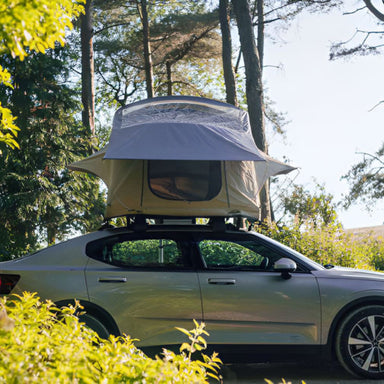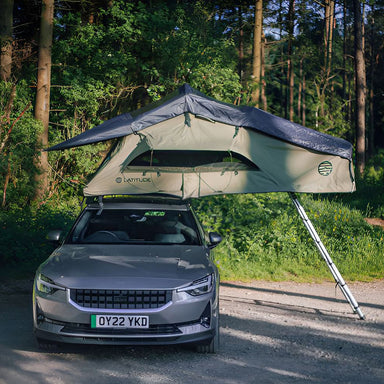Camping in a roof tent is exciting and super easy once you get the hang of things. But for those who have spent nights in traditional tents battling mould and condensation you may be wondering if it is better or worse in a roof tent. 
In this guide, we'll delve into the world of roof tents, exploring how they stand as a potential solution to the challenges faced in conventional tents. So, if you're thinking about that upgrade hopefully this should give you as much information as you need to see if it's for you.
#1. Can you get mould in a roof tent?
In short, yes..
It is 100% possible for mould to develop in a roof tent under certain conditions just like anything.
Mould thrives in damp environments, and while roof tents are designed to withstand outdoor elements, they are not immune to mould if preventive measures are not taken.
#2. If you don’t prevent mould buildup, what happens to my roof tent?
If mould is allowed to develop on the canvas material of a tent, it can compromise the water resistance of the fabric over time. Mould growth typically occurs in damp and humid conditions, and the presence of mould can lead to several issues that affect the performance of the canvas material:
- Structural Damage:
Mould can penetrate the fibres of the canvas, causing structural damage. This damage may weaken the fabric and reduce its ability to repel water effectively.
- Porosity Increase:
As mould grows and spreads, it creates a network of filaments on the fabric surface. This network can increase the porosity of the canvas, making it more permeable to water.
- Loss of Coating Integrity:
Many canvas materials used in tents are treated with water-resistant coatings. Mould growth can compromise the integrity of these coatings, diminishing their effectiveness in preventing water penetration.

Femkes Khosi Family roof tent
#3. How does mould develop in a roof tent?
For mould to develop, think first and foremost there has to be moisture.
There are two main ways this happens in a roof tent:
-
Wet weather conditions whilst camping - If you’re in the UK the rain is unavoidable so this will always be a factor!
- Warm air inside your roof tent - Condensation buildup from warm air inside your tent and from your breath when it hits the colder outer tent walls
Did you know one person can generate 1 pint of water from their breath when sleeping?
Then for mould to thrive, it requires specific conditions, primarily warmth, darkness, and continued moisture. These conditions provide an ideal environment for spores to germinate and grow into visible mould colonies.
From then on mould really develops from either not being able to or not actively reducing moisture and letting it fester.

Here are the reasons why in detail:
-
Lack of Ventilation: Proper ventilation is crucial to preventing mould. If the tent is not adequately ventilated, especially during or after rainy periods, moisture can accumulate, creating a conducive environment for mould growth.
-
Insufficient Drying: If the roof tent is packed away while still damp or wet, it provides an ideal breeding ground for mould. Always ensure that the tent is completely dry before storing it to prevent moisture retention.
-
Neglected Cleaning: Dirt, debris, and organic matter on the tent's fabric can serve as a food source for mould. Regular cleaning is essential to remove potential mould spores and eliminate conditions conducive to mould growth.
-
Weather Conditions: Extended exposure to rain without proper precautions, such as closing windows or using rainfly covers, can contribute to water accumulation inside the tent, promoting mould formation.
- Storage in Damp Environments: Storing a roof tent in a damp or humid location when not in use can increase the likelihood of mould development. It's crucial to store the tent in a dry and well-ventilated space.
#4. Proactive Mould Prevention Tips:
Now this is a long list and you do not need to do every single thing on this list unless you enjoy doing these things. But if you work the first 5 tips listed below and in the infographic we’re pretty confident you will avoid large condensation build up and in turn have a low chance of mould in your roof tent.
1. Adequate Ventilation:
- Open Vents: Always make use of the tent's ventilation features. Open vents or make a small opening in your window during the day and especially before sleeping to encourage proper air circulation.
-
Cross-Ventilation: Position the tent in a way that allows for cross-ventilation. This helps disperse moisture-laden air and reduces the risk of condensation.
2. Thorough Drying:
- Before Storage: Ensure the roof tent is completely dry before packing it away. This includes not only the fabric but also any accessories or bedding. Moisture in storage will 100% lead to mould when not in use.
-
Sun Exposure: Whenever possible, take advantage of sunny weather to air out and dry the roof tent. The sun's natural warmth can aid in thorough drying.
3. Weather Awareness:
- Rainfly Usage: Deploy rainfly covers during wet weather to minimise water entering the tent. This extra layer of protection is particularly important to prevent excess moisture. If it really is pouring then its best to hunker down and close all windows to make sure no rain gets in.
-
Pre-trip Weather Check: Stay informed about the weather forecast. If rain is expected, be proactive in taking measures to avoid water accumulation inside the tent.
4. Regular Cleaning:
- Remove Debris: Dirt and debris can contribute to mould growth. It’s a good idea to regularly clean the tent, removing any accumulated dust. I know this can be a pain and is usually overlooked.
-
Mould-Preventive Cleaning Solutions: Consider using mould-resistant cleaning solutions to wipe down surfaces. This can help inhibit mould growth and keep the tent fresh.
5. Absolutely do not dry wet clothes inside your roof tent
- You might be tight for space when you’re camping and it’s reasonable to think hanging wet clothes after a rainy hike inside your roof tent is a good idea, right?
- This will result in a massive condensation build up so definitely avoid this. f this happens best to use a towel to dry everything and air out the roof tent
6. Mould-Resistant Materials:
-
Choose Wisely: When purchasing a roof tent, opt for models made with mould-resistant materials. Manufacturers often design tents with materials that actively discourage mould development.
7. Campsite Selection:
- Avoid Low-Lying Areas: When setting up your roof tent, choose a location that is less prone to water pooling. Avoid low-lying areas where water can accumulate during rainfall.
- Don’t camp near water: Being near water will increase humidity. Camp further away from water to reduce condensation build up
8. Regular Inspections:
-
Check Seals and Zippers: Ensure that all tent seals, seams, and zippers are in good condition. Damaged or worn-out components can compromise the tent's ability to keep moisture out.
Conclusion
With the right knowledge of what causes mould and using these preventative measures you won’t have to worry about mould ruining your roof tent. Choose the right roof tent for you and your situation, invest time into preventative measures to stop condensation and mould. So, gear up, be informed, and let your roof tent be the epitome of comfort and worry-free exploration!



